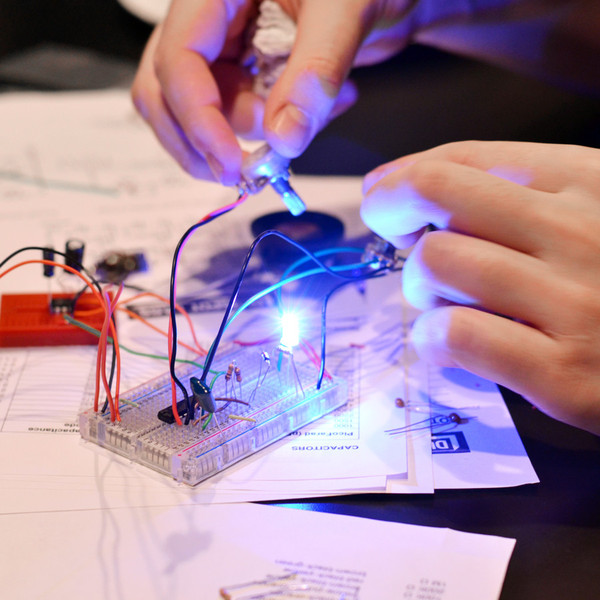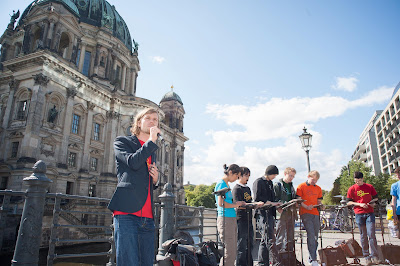Published on May 12, 2016 audiovisuality
"Discover electronics and sound design while making your own music synthesizer with sound designer, Andrew Bucksbarg. You will learn basic electronics including schematic reading, IC chips, bread-boarding, oscillators and simple circuits for sound-making and filtering, sound design concepts, and adding controls and sensors that react to touch, temperature and light. The workshop will provide expert instruction to build your own sonic electronics and get you thinking about new ways of composing, controlling and performing with your first electronic, analog mini-synth. The instrument includes a 1/4" output so it can be sampled and incorporated into your own beats, compositions, and performances. Once you have finished the workshop, it’s yours to take home and use or design further! This class is suitable for all levels, all materials for the workshop are included."

"MAY 21: ARTIST ANDREW BUCKSBARG LEADS WORKSHOP IN ELECTRONIC MUSIC SYNTHESIZER BUILDING AND SOUND EXPLORATION
 Los Angeles, CA - Discover electronics and sound design while making your own music synthesizer with sound designer, Andrew Bucksbarg through a collaboration with the design collective Poketo and The Line Hotel. You will learn basic electronics including schematic reading, IC chips, bread-boarding, oscillators and simple circuits for sound-making and filtering, sound design concepts, and adding controls and sensors that react to touch, temperature and light. The workshop will provide expert instruction to build your own sonic electronics and get you thinking about new ways of composing, controlling and performing with your first electronic, analog mini-synth. The instrument includes a 1/4" output so it can be sampled and incorporated into your own beats, compositions, and performances. Once you have finished the workshop, it’s yours to take home and use or design further! This class is suitable for all levels, all materials for the workshop are included.
Los Angeles, CA - Discover electronics and sound design while making your own music synthesizer with sound designer, Andrew Bucksbarg through a collaboration with the design collective Poketo and The Line Hotel. You will learn basic electronics including schematic reading, IC chips, bread-boarding, oscillators and simple circuits for sound-making and filtering, sound design concepts, and adding controls and sensors that react to touch, temperature and light. The workshop will provide expert instruction to build your own sonic electronics and get you thinking about new ways of composing, controlling and performing with your first electronic, analog mini-synth. The instrument includes a 1/4" output so it can be sampled and incorporated into your own beats, compositions, and performances. Once you have finished the workshop, it’s yours to take home and use or design further! This class is suitable for all levels, all materials for the workshop are included.Saturday, May 21, 2016, 11am-5pm , $250.00
For more information and to sign up visit- www.poketo.com/electronicmusic
The Line Hotel:
3515 Wilshire Blvd. Los Angeles, CA 90010
Phone: 213 - 381 - 7411 Ext: 3076
Andrew Bucksbarg (N_DREW) is an artist, musicican, producer, controllerist and audio-visualist. Andrew was an early innovator of hacking and circuit bending and noizical instrument building. He has over a decade of experience teaching courses and workshops in art, new media and sound design. Andrew's work appear has appeared in museums, galleries and festivals internationally, including installations/performances at The Hammer Museum in Los Angeles, The St. Louis Art Museum, and The Santa Monica Museum.
In need of a little post-workshop R&R? Book a room online at thelinehotel.com with code: POK3515 and receive a very special Friends and Family rate from Poketo. Some exclusions may apply."































































